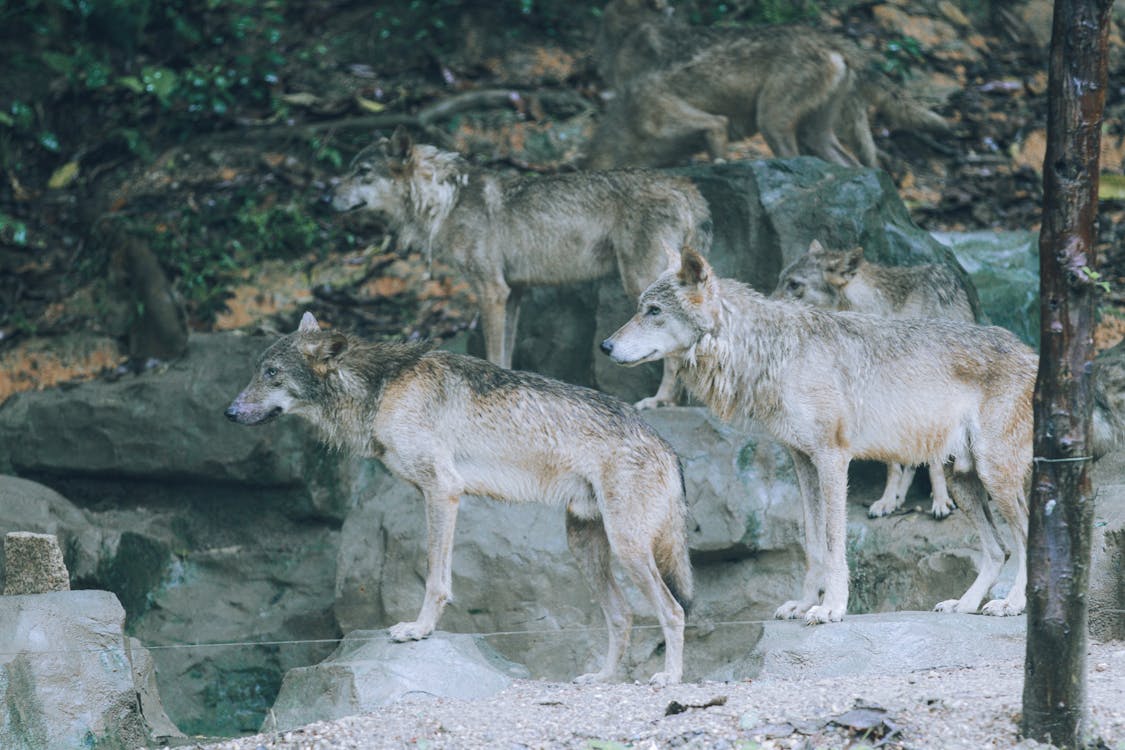The Arctic wolf, a resilient predator, roams some of the harshest environments on Earth, living in the icy tundras of the Arctic regions. These captivating creatures have evolved in extraordinary ways to survive and thrive where few other animals can. Here are ten fascinating facts about Arctic wolves that reveal their incredible adaptations and unique behaviors.
1. Masters of the Arctic Landscape
Arctic wolves (Canis lupus arctos), also known as white wolves or polar wolves, are found primarily in the high Arctic regions of Canada, Greenland, and Alaska. Unlike their gray wolf cousins, they are well adapted to live in icy, remote areas where temperatures can drop to minus 30 degrees Celsius and daylight can be limited during winter months.
2. Thick Fur Insulation
To survive the extreme cold, Arctic wolves have developed thick, multi-layered fur. Their dense outer coat protects them from wind and snow, while a soft undercoat provides additional insulation. This fur is not only warm but also camouflages them against the snowy backdrop, helping them stay hidden from prey.
3. Smaller and Stockier Build
Compared to gray wolves, Arctic wolves tend to have a more compact, stocky build, which minimizes heat loss. Their shorter ears, legs, and snouts are additional adaptations for conserving body heat. This compact build is essential for survival in such an unforgiving climate.
4. Diet and Hunting Techniques
Arctic wolves are carnivores, primarily preying on muskoxen, Arctic hares, caribou, and lemmings. In areas where food is scarce, they might go weeks without eating and rely on their strong hunting skills to catch prey. They hunt in packs, working together to bring down larger animals like muskox, which can weigh up to 900 pounds.
5. Social Structure and Pack Life
Like other wolf species, Arctic wolves are highly social animals that live in packs, usually consisting of a dominant breeding pair and their offspring. The pack works as a cohesive unit, not just for hunting, but also for raising young and protecting territory. This social structure is key to their survival in the harsh Arctic environment.
6. Nomadic Lifestyle
Unlike many wolf species that establish territories, Arctic wolves tend to be nomadic. This is largely due to the scarcity of prey in the Arctic. They may cover vast distances in search of food, sometimes roaming over 800 square miles. Their ability to travel great distances is essential for finding food in such a sparse ecosystem.
7. Superb Senses
Arctic wolves have heightened senses that aid them in hunting and survival. Their sense of smell is so powerful that they can detect prey up to 2 miles away. Their hearing is also acute, allowing them to pick up sounds of animals moving beneath the snow, helping them to hunt even when visibility is low.
8. Adaptations for Extended Periods Without Food
During particularly harsh winters, when prey is scarce, Arctic wolves can endure long periods without eating. Their bodies are adapted to enter a semi-hibernation state, where their metabolism slows down, conserving energy until food becomes available. This remarkable adaptation helps them survive in an environment where food can be inconsistent.
9. Resistant to Disease
Arctic wolves have evolved a natural resistance to many of the diseases that plague their southern cousins, such as rabies and distemper. This may be due to their isolated environment, where they are less likely to come into contact with other animals that carry diseases. This resistance gives them a survival advantage in the wild.
10. Under Threat from Climate Change
While Arctic wolves have few natural predators, their future is increasingly threatened by climate change. As Arctic ice melts and temperatures rise, their hunting grounds and prey are diminishing. Changes in the ecosystem could have long-term effects on their population, making conservation efforts crucial for their survival.
Conclusion
Arctic wolves are a testament to the adaptability and resilience of life in the most extreme conditions on Earth. Their unique characteristics—ranging from their thick coats and pack behavior to their ability to endure long stretches without food—make them truly remarkable creatures. However, with their environment under threat, these magnificent wolves may soon face unprecedented challenges, making it more important than ever to protect their fragile ecosystem.

